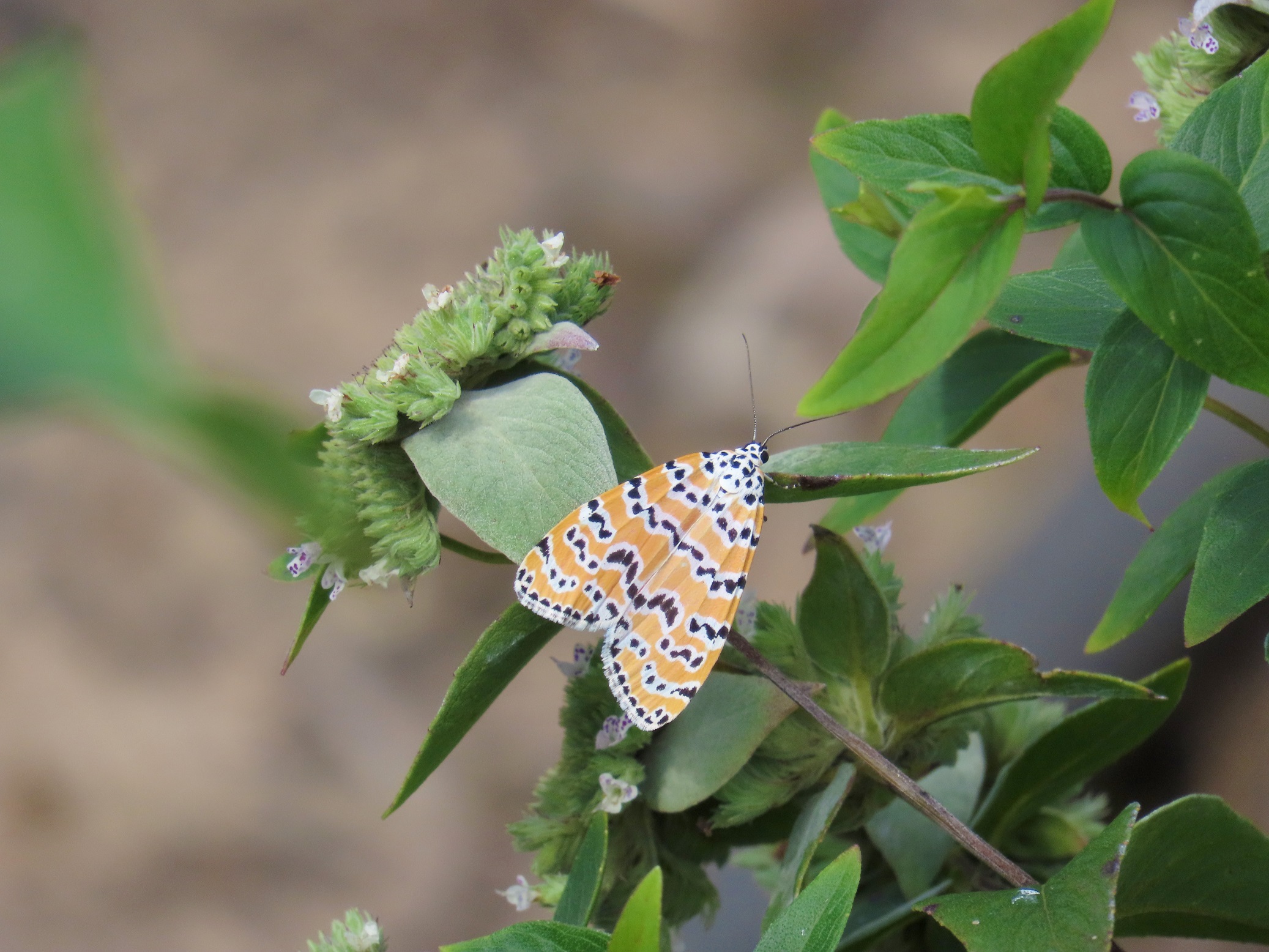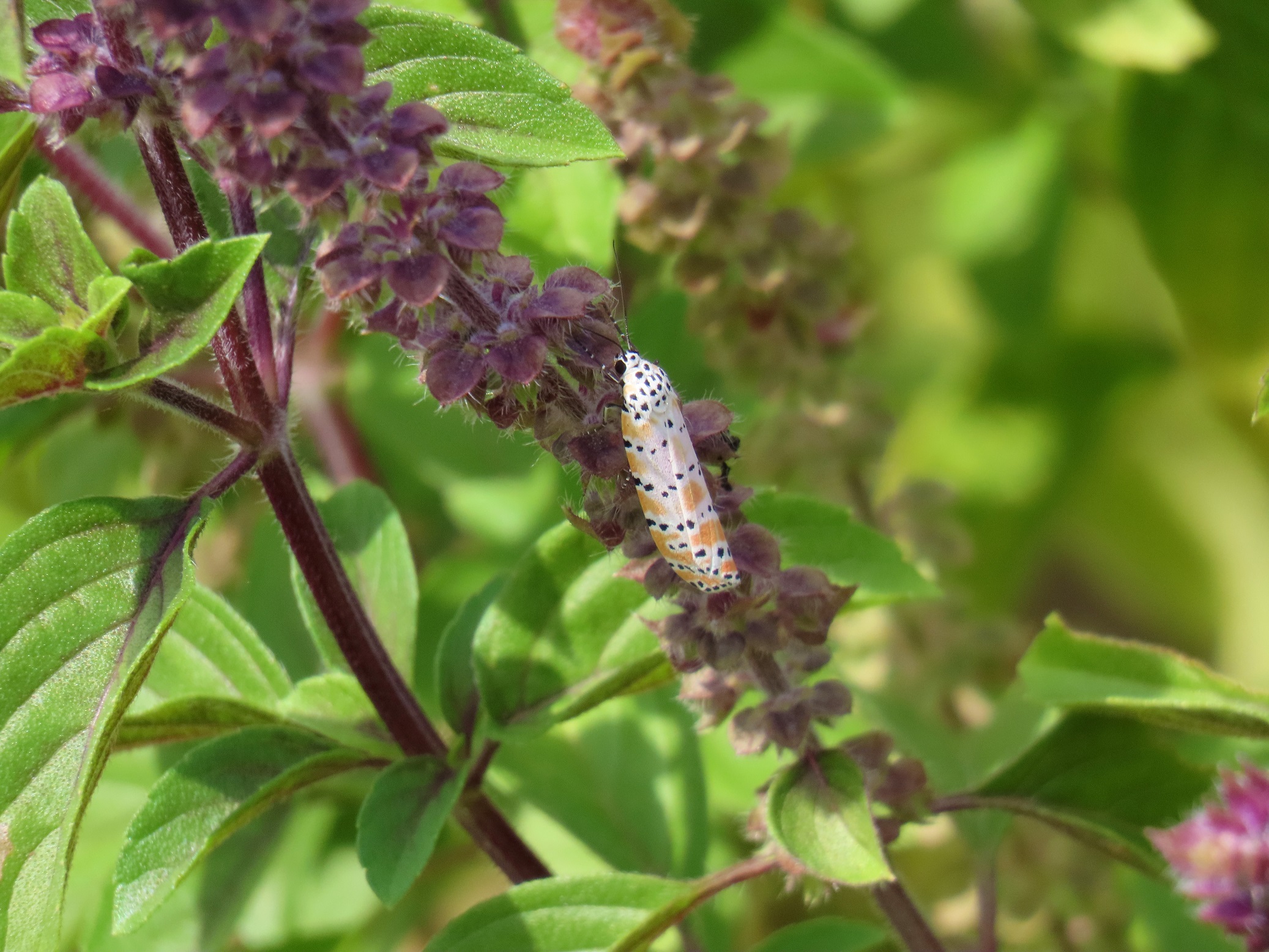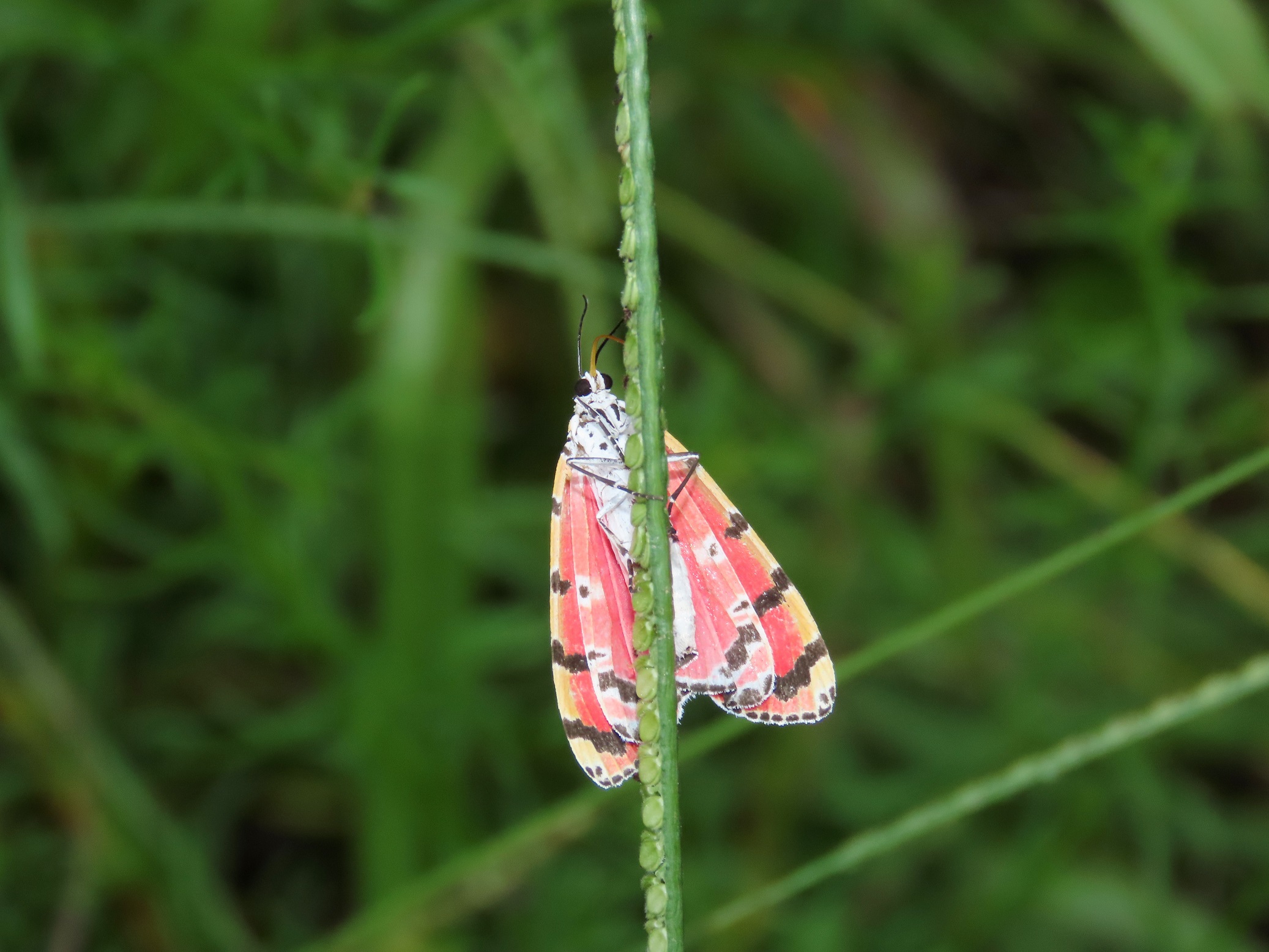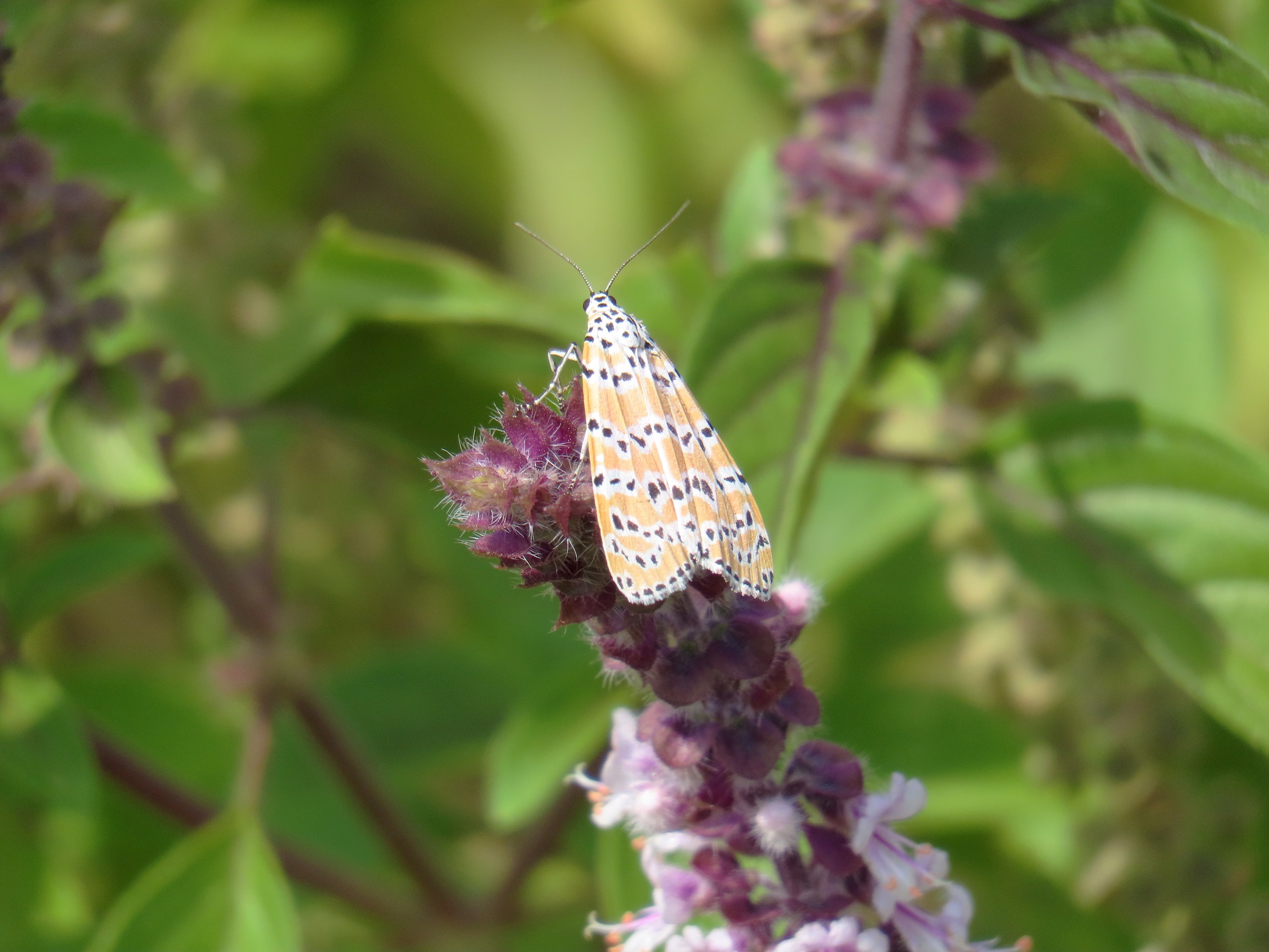




This week for Flora and Fauna Friday, we have a stunning diurnal moth of our southern grasslands, the Ornate Bella Moth (Utetheisa ornatrix).
When out stomping through a savanna or fording the sea of grass in an overgrown field, you might be pleasantly surprised to find yourself escorted by fluttering flashes of pastel-pink hovering about your knees, bounding between stems and hiding out of sight. That’s the unmistakable presence of our Ornate Bella Moth. The Ornate Bella Moth is our only species of Bella Moth in the United States and can be found throughout South Carolina. They inhabit old fields, roadsides, power line clearings, savannas, sand barrens, and other open weedy areas. There they hang around their host plants, Rattlebox (Crotolaria spp.), and can make use of both the genus’s native species and its introduced exotic species. The Ornate Bella Moth is a narrow, wedge-shaped moth about three-quarters of an inch long with a distinct head and thin, wiry antennae. Their forewing is colored a soft pastel-orange above broken by a half-dozen bands of white, each containing a chain of small black spots. Beneath the forewing they are hot-pink with black tiger-stripes, a striking color that grabs your attention in flight. Ornate Bella Moths can be found around Edisto Island almost year-round but are most abundant in early fall. Adults drink nectar and pollinate flowers.
The Ornate Bella Moth is notable for being one of the Lowcountry’s few showy and diurnal species of moth. Bella Moths belong to the Tiger Moth tribe, Arctiini, and share many of the common features of this group, particularly their highly contrasting color patterns. However, most Tiger Moths are nocturnal. Most moths in general are nocturnal and, as a consequence, most are cryptically colored, both to avoid being seen when hiding during the day and because flashy colors don’t do you much good when no one can see you. The Ornate Bella Moth has taken a page out of the butterfly book instead to become both colorful and a day-flyer.
Butterflies, which are technically moths (order Lepidoptera) but form a distinct and recognizable superfamily (Papilionoidea), have taken a very different survival strategy than most moths. They became diurnal to take advantage of the abundant nectar resources that plants make available during the day, bribes for bees, flies, wasps, and beetles to pollinate them. Having to rely less on smell and moonlight to navigate in darkness, butterflies instead improved their eyesight. They also became colorful to make themselves visible to each other, and to their predators. Many butterflies concentrate plant toxins in their bodies to make themselves either poisonous or taste terrible. The Monarch, Pipevine Swallowtail, and Gulf Fritillary are classic examples. Both the Monarch and Gulf Fritillary also display aposematic coloration. Aposematic coloration serves as a warning to predators to avoid eating a certain species and typically in insects manifests as orange and black banding. That’s what our Ornate Bella Moth is doing. It concentrates toxic alkaloid compounds from the Rattlebox leaves it eats as a caterpillar, serving to protect itself throughout life, and even protects its eggs. However, being brightly colored isn’t a good warning in pitch blackness, so becoming diurnal counterintuitively helped this species avoid predation. Then, since they’re out during the day, the adult moths might as well get in on the pollination action the butterflies have been hogging all these years. And before you know it, you’ve got a moth copying a butterfly’s homework!